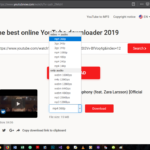How to Choose a Recruitment Tracking Software for Your Needs?
Recruitment tracking software is a specialized tool used by staffing firms of all sizes to streamline their time-consuming hiring process. It allows recruiters to track and manage applicants, schedule interviews, analyze their progress, send them offer letters, etc.
A typical recruitment tracking software can:
- Speed up almost every phase of the recruitment process
- Enhance your candidate experience and engagement process.
- Analyze and provide detailed metrics.
- Make the interview scheduling hassle-free.
- Enhance the workflow and team’s productivity.
- Help source and hire high-quality candidates.
- Lower the cost and time spent per hire.
- Boost your recruitment branding.
- And many more.
That being said, it is vital to understand that different types of recruitment tracking software perform different actions. For instance, a resume parser screens the resume while interviewing software helps evaluate candidates during their interviews.
While fully integrated recruitment tracking software can automate your hiring process, some recruiters still prefer standalone HR tools. So, it is essential to note some popular types of software available in the market and their uses.
Types of Recruitment Tracking Software
- Applicant Tracking System (ATS): It helps companies manage and track job applicants throughout the recruitment process.
- Talent Management System (RMS): They provide a more comprehensive set of tools for managing the candidates’ hiring journey, from applying to jobs to becoming employees.
- Recruitment Marketing Platforms: These platforms help companies attract and engage with potential candidates by creating and distributing content, such as job listings and company information.
- Background Check Software: These systems help employers verify the information provided by job applicants, such as their work history and education.
- Referral Management System: It allows companies to track and reward employees for referring qualified job candidates.
- Recruitment Chatbots: AI chatbots are designed to assist job seekers with their job search by providing information about open positions, answering questions, and even scheduling interviews.
- Video Interviewing Software: This software allows recruiters to conduct job interviews via video conferencing, which can be a more efficient and cost-effective way of interviewing candidates.
Remember, no recruiting software is perfect; it can be right for you according to your goals and challenges.
7 Steps to Choosing a Right Recruitment Tracking Software
Choosing the right recruitment tracking software can be a daunting task, especially for staffing agencies that are new to the process. You can find help at TEC regarding recruitment software that meets your requirements.
With thousands of options available, it can be overwhelming to know where to start. But don’t worry; these seven steps will help you!
Identify Your Needs
The first step in choosing a recruitment tracking software is identifying your business needs and goals.
It includes understanding what type of positions you will be recruiting for, how many positions you will be recruiting for, and what type of candidates you will be recruiting.
Understanding your needs will help you narrow down the options and find software that best fits your requirements.
Evaluate the Features
Once you have identified your needs, you can start evaluating the features of different recruitment tracking software available in the market.
Look for software with features important to your staffing firm, such as resume screening, candidate tracking, and interview scheduling.
It’s also important to consider if the software allows you to create custom fields, set up custom workflows, and can integrate seamlessly with your existing system.
Consider the User Experience
The user experience is an important consideration when choosing recruitment tracking software. You want to choose software that is easy to use and navigate and one that your team will adapt quickly.
Look for software that has a clean, user-friendly interface and provides detailed instructions on how to use its various features.
Check the Reporting and Analytics Feature
Recruitment tracking software should provide detailed reporting and analytics. Look for software that offers real-time analytics and customized reports and can export data into other formats.
These features will help you better understand your recruitment process’s performance and make data-driven decisions.
Look for Scalability Options
Your recruitment needs will change as your firm grows, so choosing software that can grow with you is essential.
Look for software that can handle high-volume recruiting and is easily customized to meet your specific needs.
Consider Its Cost and Customer Support Service
It’s essential to consider the cost of the software and the customer support provided for easy and secure implementation.
Look for software that fits your budget and provides a high level of customer support.
Consider if the software vendor offers training and ongoing support and if they have a customer service team available to help you with any issues or questions 24/7.
Take a Free Trail or Book a Demo
Before making a final decision, it’s crucial to test the software once. Many software vendors offer free trials or demos, so you can understand how the software works and how it fits your needs.
***
Choosing the right recruitment tracking software for your agency is a crucial step in streamlining your recruitment process. If you are unsure about your decision, always seek the help of your team members and hiring managers. Don’t rush the process!
Cover Image by Freepik
















